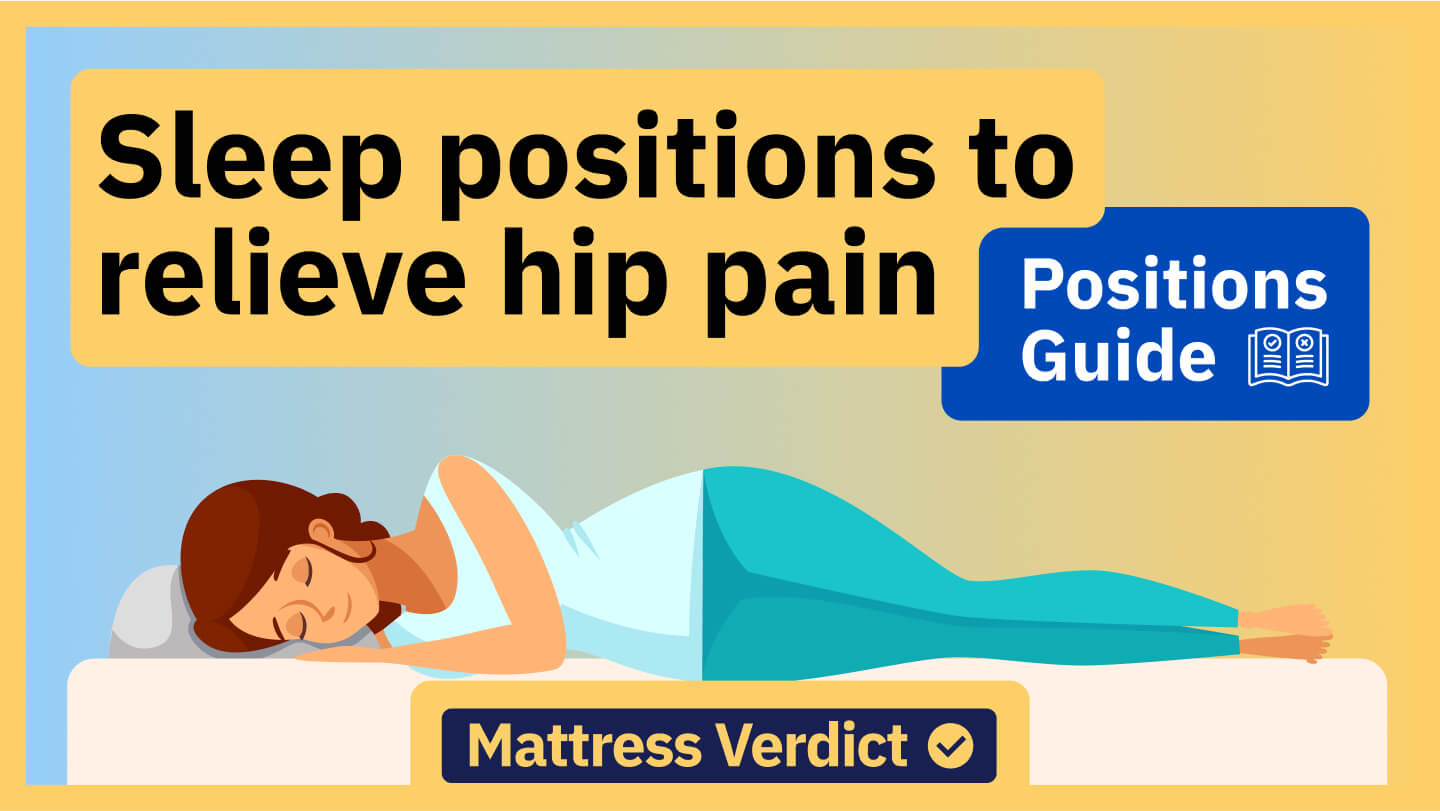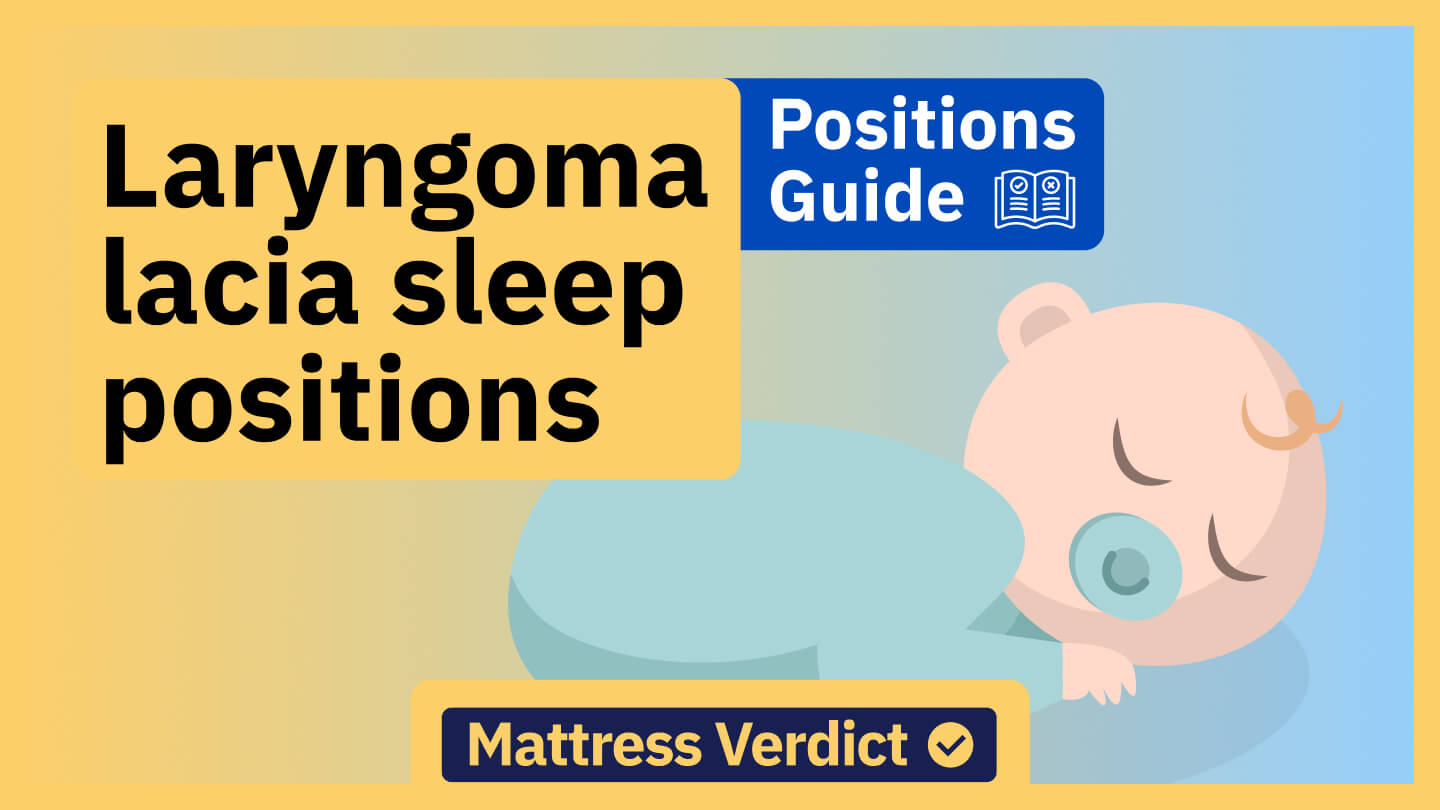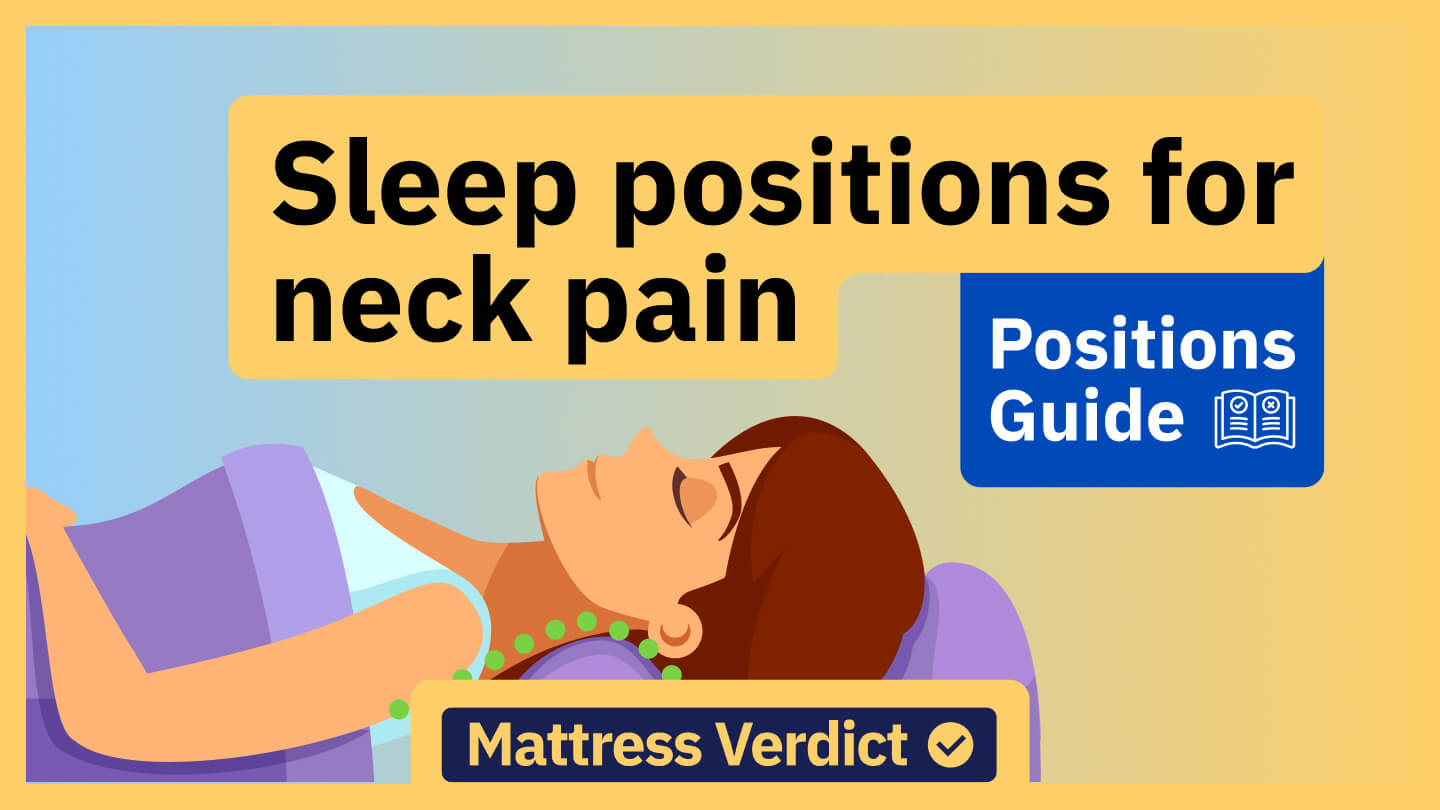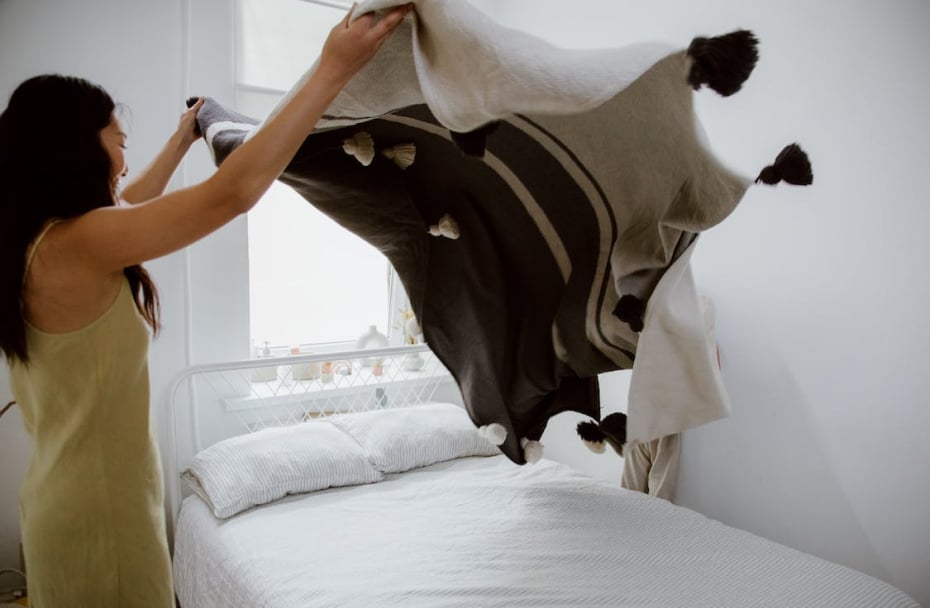



For a long time, nobody knew what happened behind closed eyes, not even ordinary folks like us. Even scientists assumed that sleep was just a chance for the brain to take a break. But now it’s clear that sleep quality and quantity affect our ability to perform even the simplest everyday tasks. Years of research also strongly suggest that the bedroom environment is essential in our ability to fall asleep faster, sleep better each night, and feel well-rested during the day.
In this post, we take a closer look at the role of bedroom design in sleep hygiene. We’ll look at the importance of sleep and how bedroom parameters, such as light, noise, temperature, and mattress comfort, promote a good night’s sleep.
The Critical Role of Sleep
We should get 7-9 hours of sleep every day. But have you ever wondered what happens behind your closed eyes?
No one knows for sure what sleep is for. But scientists agree that slumber is as important as air, food, and water. They have tied sleep benefits to nearly every aspect of our lives and each body organ. Sleep health benefits are many and include;
Improved heart health
Sleep is the only time the sympathetic drive goes down, and the parasympathetic level goes up. Increased parasympathetic nervous system (PNS) activity leads to higher levels of the acetylcholine hormone, which slows the heart rate and blood pressure. The result is a reduced risk of heart attacks, stroke, and heart disease.
Regulates blood sugar
Growing evidence shows that poor sleep habits increase one’s risk of diabetes. For people already living with diabetes, lack of enough sleep has been shown to put them at a higher risk of blood sugar-related issues, including stroke and death. Poor sleep increases one’s odds of getting diabetes by interfering with how insulin works. Improper sleep can cause insulin resistance. That’s when the cell in the liver, muscle, and fat fail to absorb the sugar in the blood as they should.
Reduces stress and anxiety levels
Proper sleep is one of the best stress relievers. Sleep lowers stress and anxiety by reducing the levels of stress hormones, particularly cortisol. Cortisol has a host of vital roles in the body, including managing flight/fight response, metabolism, and the immune response. But chronically excess cortisol levels can cause depression, anxiety, fatigue, bloating, and diarrhea.
Generally, sleep deprivation is linked to a variety of chronic health problems, such as high blood pressure, heart disease, kidney disease, diabetes, stroke, and obesity. Low sleep quality is also associated with mental health issues, including depression, suicide, risk-taking behaviors, and problems controlling emotions.
The Importance of a Good Sleep Environment
Healthwise, the bedroom is the most important space in the house. It’s a personal oasis where you wind down and take a break from the stresses of the world. Our sleep environment impacts how we rest, how we fall asleep, how long we stay asleep, and how we wake up. Considering the importance of sleep, the bedroom plays a considerable role in our everyday waking life.
Designing a bedroom that promotes relaxation and sleep is the first step towards sleeping better at night. Here are some of the things you should consider:
Temperature
The temperature in your sleep environment affects sleep in various ways. A room that is warmer than the ideal bedroom temperature range is associated with increased wakefulness and decreased rapid eye movement (REM). REM sleep plays a key role in repairing and protecting the brain. REM sleep deprivation affects your ability to control emotions (anger, sadness, and irritability), develop memories, and acquire new knowledge.
Conversely, sleeping in a colder room won’t alter your sleep cycles. But it may prolong your sleep onset latency (how long it takes to drift to sleep after switching off the lights).
The ideal bedroom temperature range for sleeping is between 60 and 67 degrees Fahrenheit. Most adults tend to fall asleep fast and maintain sleep within this range. It’s recommended to keep the sleeping temperatures a bit higher for babies' rooms, ideally between 65 and 70 degrees Fahrenheit.
Research supports taking a warm shower or bath before bed to improve the quality of sleep.
Maintaining the Ideal Bedroom Temperature
-
Consider these methods of optimizing bedroom temperature for sleep:
-
Use the thermostat to help keep your bedroom temperature within the ideal sleep range. Set your thermostat to start cooling your bedroom an hour before bed so you find it nice and ready.
-
When the sun is blazing outside, cover the windows by closing the curtains and blinds to lower heat build-up.
-
If possible, open the windows for increased airflow during hot summer nights.
-
Sleep low. If you live in a multi-floor house, consider a bedroom on the lower floors or even sleep in the basement during summer. Putting your mattress on the floor is another trick to beat the heat.
-
For room heating ideas during winter, consider insulating curtains and quick-sealing your windows. Opening your drapes and window curtains to let free solar heat during the day and closing them just before sunset will also help maintain the ideal sleep temperature.
-
Get a mattress designed with temperature regulation in mind to complement your room cooling or heating hacks. Memory foam mattresses excel at maintaining neutral sleeping temperatures during winter nights. Thanks to their excellent cooling abilities, hybrid mattresses or special cooling mattresses are the best for hot sleepers, particularly during hot summer months.
Choosing the Right Mattress
Your mattress can make or break your sleep. Constantly tossing and turning in bed is a clear sign that the mattress is sabotaging your natural spinal alignment. The result is pressure build-up around the hips, shoulders, and neck. Unconsciously, these movements and joint pains interrupt your sleep cycle, hindering you from logging a healthy amount of restorative sleep. In turn, you wake up feeling tired and with no energy. There are various reasons people wake up tired. But sleeping on the wrong mattress is among the most common.
Even a new mattress can cause sleep problems if it does not offer the right amount of support and comfort for your needs.
Consider these things when choosing a mattress:
Firmness level
Mattress firmness describes how hard or soft the mattress feels. The industry standard for measuring mattress firmness is a 10-point scale where 1 is feather-soft, and 10 is rock-hard.
Lightweight people (under 150 lbs) often prefer soft to medium mattresses ranging from 1 to 5 on the firmness scale. The only exception is lightweight stomach sleepers and those who enjoy sleeping on a firm mattress. Average-weight people (150-230 lbs) go for medium to medium-firm mattresses (5-6.5). Overweight individuals (above 230 lbs) prefer firm mattresses (7 and above on the mattress firmness scale).
Medium-firm is the most popular firmness range because it balances comfort and support. This range also offers the best mattress for couples who can’t agree on the perfect firmness for both.
Mattress comfort and support
Mattress quality is determined by its level of comfort and support. Comfort refers to the general feel of the mattress when you lie on it. It’s provided by the top layers of the mattress, including the cover. On the flip side, mattress support refers to how well the mattress pushes back against your body weight to promote neutral spinal alignment. A mattress that balances support and comfort alleviates hip, back, and shoulder pains and promotes deep and restorative sleep.
Mattress type
It also pays to understand how different mattress materials work when shopping for the best mattress for sleep. In particular, consider how the mattress material performs regarding support, comfort, temperature regulation, and pressure relief.
Memory foam mattresses are popular for their pressure and back pain relief properties. And now, manufacturers have advanced technologies to help deal with the issue of heat retention, including gel and copper infusion.
Latex offers most of the properties that memory foam provides. The added advantage is that latex is bouncier and has better temperature regulation. Also, unlike memory foam, latex allows you to sleep on top of the mattress instead of burying you inside its layers.
Innerspring mattresses are particularly popular with heavyweight stomach and back sleepers. People who sleep in these positions prefer mattresses with firm support systems. People who sleep hot at night also appreciate innerspring mattresses because their coil structure allows air to circulate freely.
Hybrid mattresses are another popular option. If you want a mattress that combines the pressure-relieving properties of foam with the support and temperature regulation of coils, consider a hybrid mattress.
Room Layout and Furniture Arrangement
Believe it or not- your bedroom layout could dramatically impact your sleep satisfaction. Your bedroom needs to be calm, serene, and restful. One way to achieve all of these in your bedroom is to Feng Shui. Feng Shui is the Chinese art of arranging things in a way that promotes peace and harmony.
Here are some fundamentals of maximizing the Feng Shui bedroom layout:
-
Position the bed centrally in the room. The bed should face your bedroom door but not in line with it.
-
Ensure your bed is accessible from both sides.
-
Have a bedside table on both sides of the bed. Preferably, have plants on these tables to help bring nature inside your bedroom.
While thinking of furniture arrangement, ensure your sleeping space is tidy. A clutter-free bedroom can promote sleep quality by minimizing feelings of anxiety and stress.
Controlling Light and Noise
Light and sleep
Bright light exposure in the morning and during the day tells your brain it’s time to stay awake. As natural light disappears in the evening, the brain interprets this as the time to wind down. It increases the production of the hormone melatonin, which promotes sleep.
Unfortunately, darkness is rare in the modern world. Bright artificial light in the hours leading to sleep blocks melatonin production. As a result, you take longer to fall asleep even after switching the lights off, reducing overall sleep duration. If you have to wake up early the following morning for school or work, this difficulty falling asleep can increase tension.
Here are a few tips for light exposure control before bed to sleep soundly:
-
Start with dimming all the bright lights around your house.
-
Use blackout curtains to block out unwanted light coming in through the windows.
-
Use blackout stickers to block out indicator lights coming from your bedroom appliances, toys, and gadgets.
-
Keep your bedroom technology-free.
Noise and sleep
Noise can affect sleep quality by preventing you from falling asleep and causing disruptions during sleep. Unwanted sounds can also rouse you from deep sleep, interrupting your sleep cycles. There is growing evidence that regular sleep disturbances can have negative health outcomes.
White noise machines offer an excellent way of reducing noise pollution in the bedroom. They work by drowning the distracting background noise without waking you up. Other methods of blocking out noise at night include using high-quality earplugs and sound-proofing your bedroom.
Bedroom Aesthetics
Your bedroom aesthetics is key when it comes to creating a zen-like sanctuary. In addition to lighting and furniture arrangement, you also want to consider your bedroom decor, particularly the colors. It’s important to lean towards soft and inviting colors like blue, white, yellow, green, silver, and pink. These colors create a cozy, sleep-friendly decor that can help reduce anxiety and relax.
Conclusion
Now, more than ever, do we understand the role of the sleep environment in a good night’s sleep. The bedroom is not just another room you retire to when the lights go out. It’s a haven of tranquility where your body hits the reset button, so you wake up refreshed and energized for the day.
Here’s a quick bedroom design summary of what we have covered;
-
Invest in a mattress that works for you
-
Mind your bedroom aesthetics
-
Feng Shui and declutter your sleep space
-
Control light, noise, and temperature
FAQs
What type of mattress is best for my sleep?
The best mattress for sleeping will depend on your weight, sleeping position, and personal preference. Hybrid mattresses are popular because they combine the comfort and pressure-relieving properties of foam with the robust support of innerspring.
How can I control the noise level in my bedroom?
You can reduce noise pollution in your bedroom by;
-
Using white noise machines
-
Hanging sound-proofing curtains
-
Upgrading to a heavy-duty, solid-wood bedroom door
-
Insulating interior walls
-
Applying noise-reducing wallpaper
How does clutter in the bedroom affect sleep?
Clutter in the bedroom can cause sleeping troubles because the brain registers the mess as additional work that needs to be done.
What temperature should my bedroom be for optimal sleep?
The ideal sleep temperature for most adults is 60 to 67 degrees Fahrenheit.
How does a mattress affect sleep quality?
A high-quality mattress balances comfort and support, making it easy to fall asleep fast and enjoy deep sleep. Deep sleep is vital for recharging the body and the brain.




